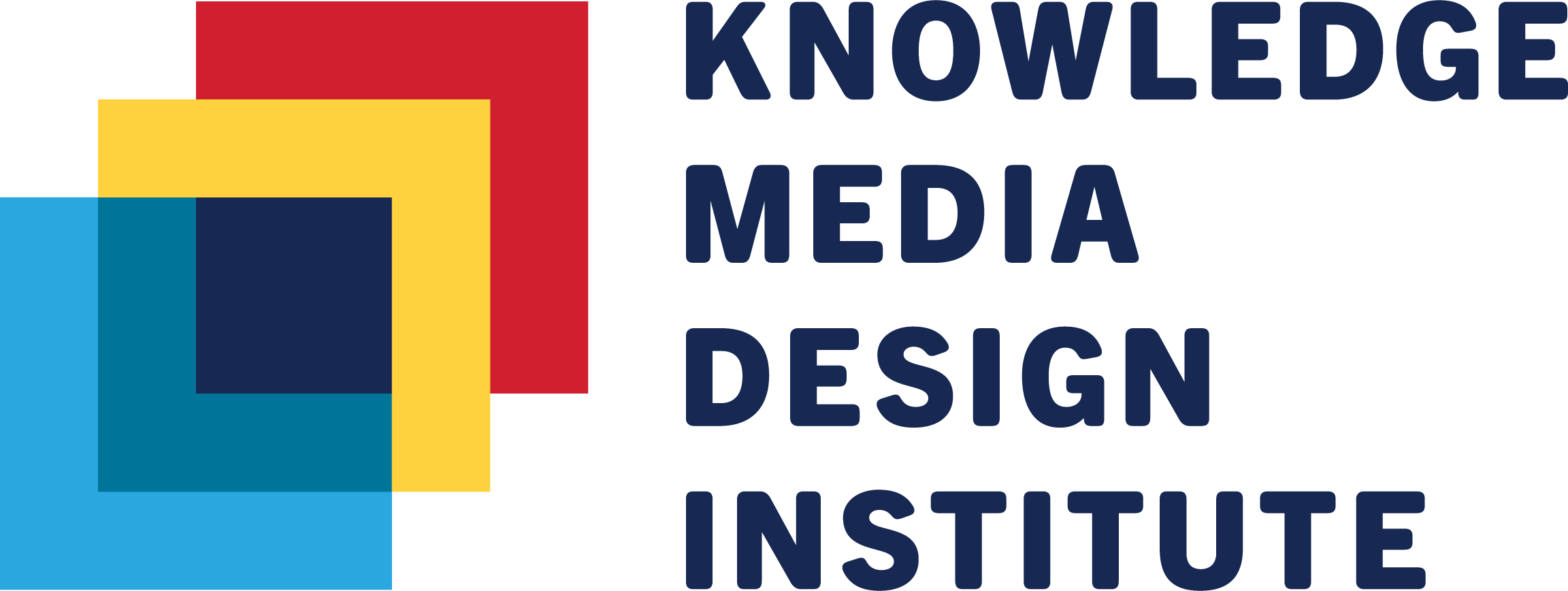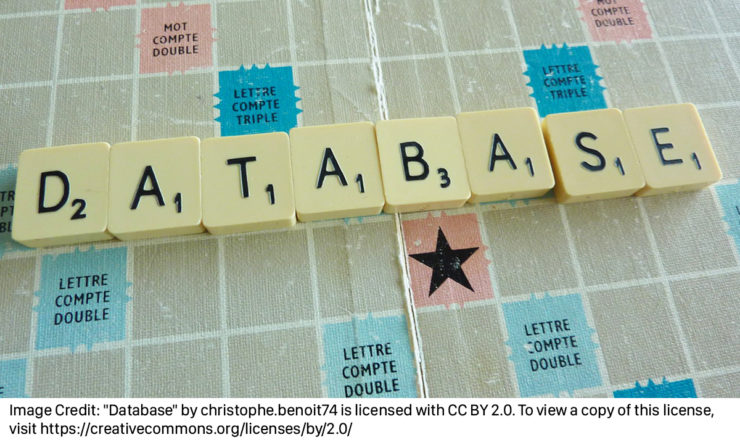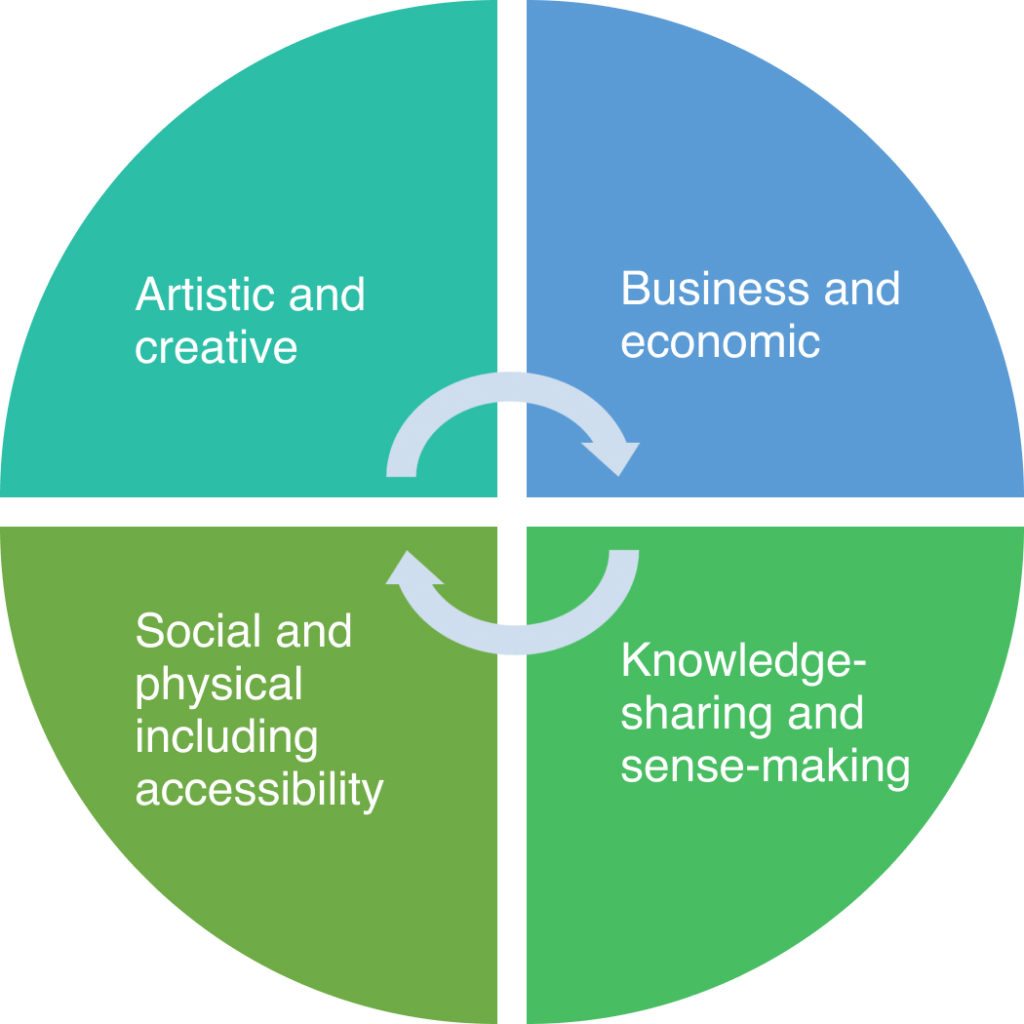Over the last few years, with the support of KMDI, SSHRC and the University of Toronto Connaught New Researcher program, KMD-CS Director, Professor Mary Elizabeth (M.E.) Luka facilitated the creation of the Creative Hubs and Networks Mapping Initiative (CHNMI). This research database collects and now shares information about 200 hubs and networks in Canada and beyond. The database reports on organizational mission and vision; location(s); users; programs and services; business models; funders; and marketing and outreach.
While each hub or network is quite unique, many also have much in common with other hubs. Researchers, creative workers and funders and others can use this database to examine the many kinds of creative hubs and networks in Canada, including incubators, creative service providers, experimental arts laboratories, community hubs and co-working spaces. These sites can include bricks-and-mortar buildings, or organizations distributed over wide geographic spaces, or membership-based and virtual operations, each featuring a multitude of forms of arts, media and digital innovation.
Luka uses the database to examine ways that researchers and others can better understand the purposes of and assess the impact or “success” of Canada’s creative hubs focused on arts, culture and media. Knowledge-sharing and collaboration are crucial opportunities for the creative ecosystem to leverage the strengths of the many creative hubs and networks focused on arts, culture and media in Canada, which is why the CHNMI database is helpful.
Creative hubs often help to develop a cultural district, offer co-working or presentation spaces for professional creative workers to share skills, networks or their current work, spark innovation, or involve citizens, clients and users in the creative sector in more collaborative ways. Such spaces are important because the culture sector is a crucial element of our social fabric and the economy.
Researchers use the database to study arts, culture and media-based creative hubs such as cSpace (a co-working building), AccessArts (a multidisciplinary disability arts organization) and the Banff Centre for Arts and Creativity in Alberta; BC Artscape (a social service and arts co-working building) in Vancouver and Yukonstruct (a social enterprise and business incubation centre) in Whitehorse; New Dawn Centre for Social Innovation in rural Nova Scotia; and the European Network of Living Labs, Watershed in Bristol, IDEO.org and URBACT (some of the international initiatives that connect to Canada). So can funders, media, students and people who simply interested in creative hubs.
Most creative hubs are understood to be incubators or start-up structures located in buildings where many creative people and organizations rent or co-work. But many others are virtual or distributed in their operations, particularly outside urban centres. Examples of the latter include Qaggiavuut and its proposal for Qaggiq as a central hub for arts and culture activities across Northern Canada, Flin Flon’s main street of creative businesses and non-profit artist studios, and Lunenburg’s regional creative economy in Nova Scotia. Creative hubs can include a wide range of creative activity by artists, social entrepreneurs and service organizations that address social, cultural and economic needs and practices.
In recently completed research for the Department of Canadian Heritage, M.E. Luka, Jacqueline Wallace, Helen Yung, Katy Ilona Harris, Claudia Sicondolfo and Hillary Walker took a wholistic approach to appriasing 195 studies on impact assessment literature and frameworks. Luka, Wallace and Yung identified a wide spectrum of potential impact or “success” measures. A streamlined logic model (see Figure 1, below) incorporates four key types of these measures: artistic and creative; business and economic; social and physical (access, inclusion); and knowledge-sharing and sense-making.
During the same period, the visualization team, including digital librarians Kirsta Stapelfeld, David Kwasny and Paulina Rousseau, Faculty of Information graduate students Samarth Singhania and Rachel Barber-Pin, and web and graphic designers Jermaine Williams and JP King have piloted visualizations for CHNMI. As each term passes, it is great to see that a growing number of students, researchers, and creative hub leaders and funders are making use of the resource.
If you are interested in gaining access to the database, please reach out to maryelizabeth.luka@utoronto.ca


